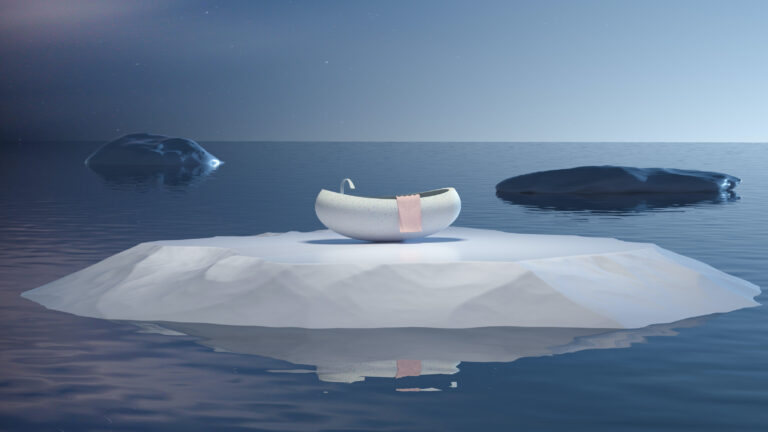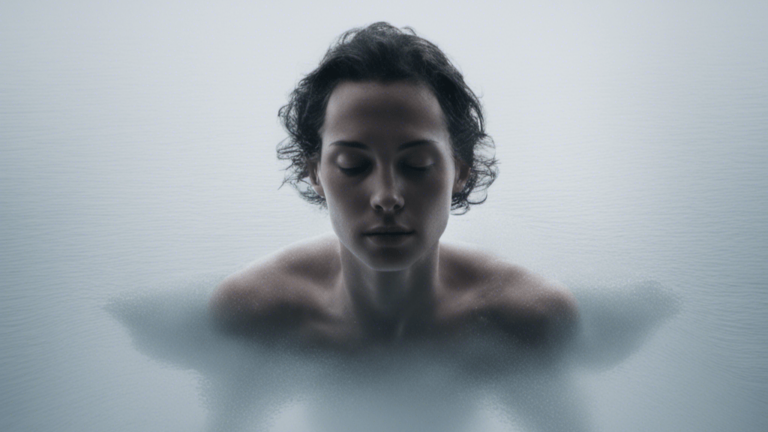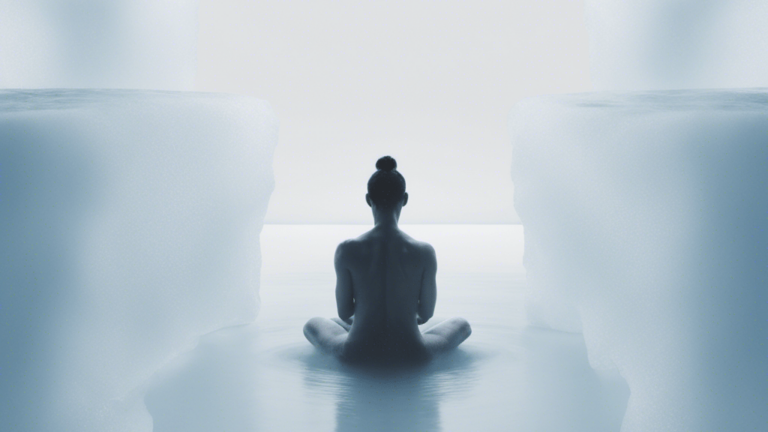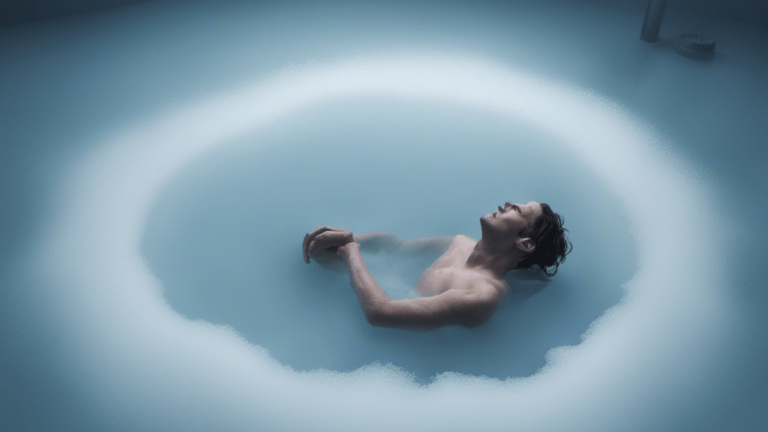Ice Baths for Weight Loss: Fact or Fiction?

This article explores the science of ice baths, the physical and mental response of our body to cold exposure, and how it could potentially help us lose weight. Whether you want to lose weight or are simply looking for pain and stress management, this article will offer a comprehensive understanding of the practice.
Keep reading to unravel the truth about ice baths for weight loss.
What are Ice Baths?
Ice baths, also known as cold water immersion therapy, have been a popular form of wellness therapy for centuries. This practice has roots in ancient civilizations and was traditionally used to promote health and vitality. Modern science now highlights the impressive benefits of ice baths.
The practice of ice bathing is simple. To perform an ice bath, you immerse yourself in a tub filled with cold water for a set period.
Do you want to have an ice bath today and you’re not sure how? Read our comprehensive guide on taking an ice bath here.
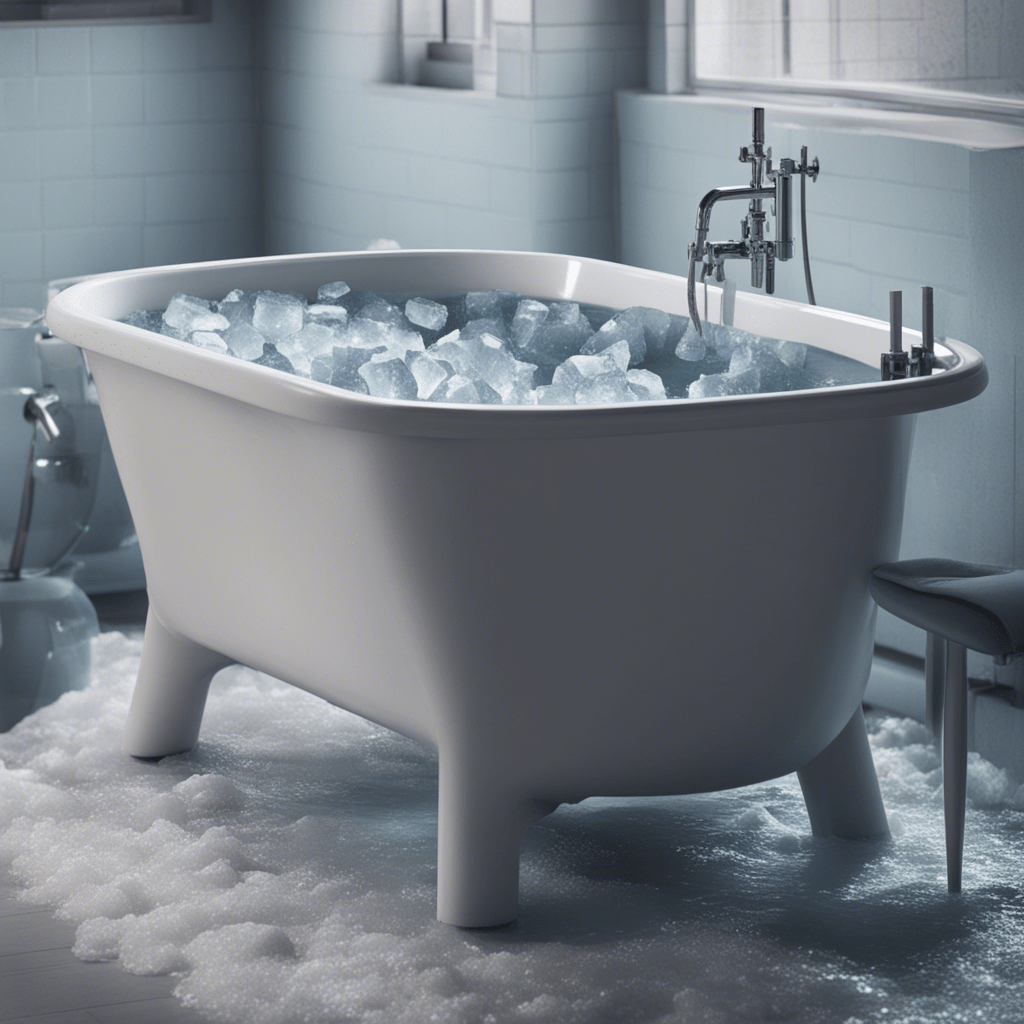
Ice Baths – History and Origins
Ice bath therapy, or the practice of submerging the body in cold water, has been a healing strategy for ages. This practice traces its origins back to the ancient civilizations of Rome, Egypt, and Greece, where it was incorporated into therapeutic rituals. Roman baths, for example, featured a frigidarium, a cold water bath as part of their bathing sequence. Also, it’s believed that ancient Egyptians used immersion in the River Nile’s cool water for health benefits.
Fast forward to the modern day, ice baths have emerged as a go-to recovery tool for athletes. From renowned swimmer Michael Phelps to the late basketball player Kobe Bryant, many sports figures have used the benefits of ice baths for muscle recovery. High-profile endorsements like these have contributed to ice baths’ global rise in popularity.
Evolution of Ice Baths
The application of ice baths has evolved significantly over time, becoming a holistic health routine. Cold exposure therapy has become extremely popular and moved into mainstream practices. The benefits of ice baths have caught the attention of wellness circles, finding their way into the day-to-day routines of fitness enthusiasts and health-conscious individuals.
Some businesses have taken cold water immersion a step further by introducing next-generation cryotherapy services. These high-tech healing sessions expose the body to extremely cold temperatures in a controlled environment. They claim that this offers similar benefits to traditional ice baths but without the need for complete submersion in water.
How Do Ice Baths Work?
Understanding the science behind ice baths helps us appreciate their therapeutic potential. Ice bath therapy works on the principle of the constriction and dilation of blood vessels. When you immerse in an ice tub, your body experiences a sharp temperature drop, which constricts the blood vessels. This process enhances circulation and helps flush away metabolic waste.
The human body reacts in several ways to maintain its internal temperature when exposed to extreme cold. Shivering is the most common and recognizable reaction, a mechanism designed to generate heat through muscle contraction. Another response is non-shivering thermogenesis, where metabolic activities burn calories to produce heat. The cold also stimulates metabolism and helps reduce inflammation, making it an effective pain management technique.
Ice Baths – Benefits
From enhancing muscle recovery to immunity boost (1), stress release (2), and sleep improvement (3), ice baths have a broad spectrum of benefits. However, it’s important to distinguish between actual benefits grounded in scientific research and benefits based on anecdotal or experiential evidence.
Reduction in Muscle Inflammation and Recovery Acceleration
The most famous benefit of ice baths is their ability to minimize muscle inflammation and accelerate recovery post-workouts, as shown by many scientific studies (4). Athletes and coaches swear by this method and attribute their faster recovery times to regular cold water immersion.
Stress Release and Mood Boost
Beyond the physical gains, there’s a psychological aspect to ice baths as well. The breath control needed to comfortably sit in the cold water can have a meditative effect. The rush of endorphins post-immersion often leads to a mood boost, helping relieve stress and anxiety.
As such, ice baths can be a valuable addition to any wellness routine, offering a distinctive way to rejuvenate the mind and body simultaneously. Read more about the benefits of ice baths here.
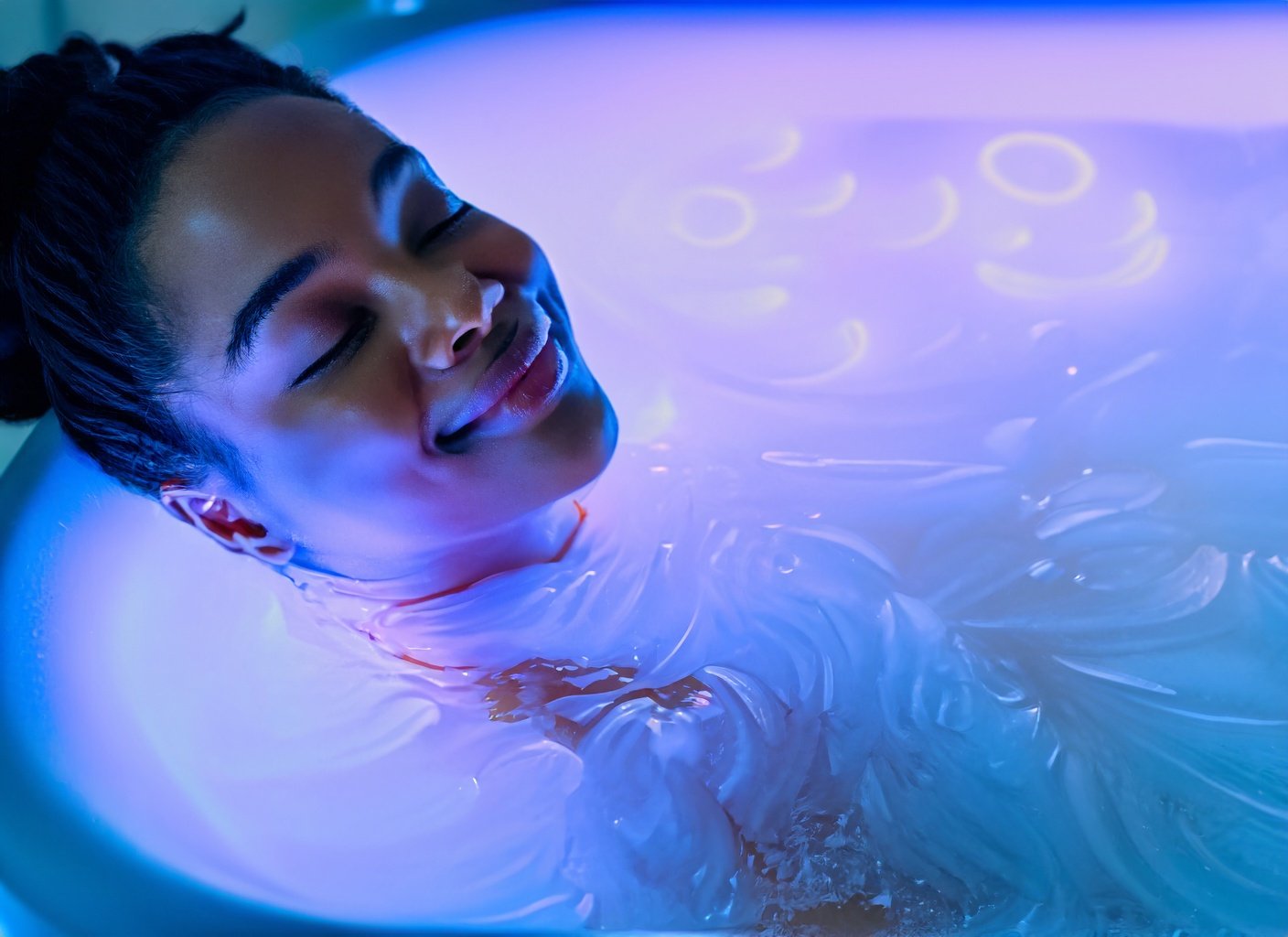
Ice Baths for Weight Loss – The Facts
Can cold water immersion therapy actually be used to lose weight? Keep reading and find out what we currently know about the benefits of ice tubs for weight loss.
What is Brown Adipose Tissue?
When talking about body fat, most people are familiar with white adipose (fat) tissue. This tissue stores energy in times of caloric surplus. However, our bodies also contain a smaller amount of brown adipose tissue (BAT), a tissue with a different kind of metabolic function.
Brown fat burns stored energy to produce heat. It’s a tool that our body uses to maintain our core body temperature. When activated, BAT can burn a significant amount of calories. Cold exposure is one of the most effective ways to activate BAT, and this is where ice baths come into play.
The theory is that prolonged cold exposure from ice bath therapy stimulates BAT, prompting it to burn more calories and contribute to weight loss.
Brown Adipose Tissue for Weight Loss
Ice baths, with the extreme cold they introduce, can potentially ramp up your metabolism by stimulating BAT. Moreover, stimulating BAT might also have a positive effect on insulin sensitivity, which can be an additional advantage for weight management.
Scientific studies on the impact of cold exposure on BAT and weight loss provide mixed results. Some studies show that cold exposure stimulates BAT and results in increased energy expenditure. However, the effect on the overall body weight remains unclear. Other studies caution that the body may adapt to the cold over time, reducing any potential weight loss benefits (5). You can read a review of these studies here.
Moreover, the extent of cold exposure’s effect on BAT and calorie burning may depend upon individual variables, like a person’s age, diet, and amount of BAT. Therefore, while there is potential for weight loss via BAT activation through ice baths, further studies are needed to confirm this theory.
Ice Baths and Appetite Suppression
Another interesting aspect is the theory of appetite suppression through cold exposure. An ice bath might:
- lower the levels of the hunger hormone ghrelin,
- reduce appetite,
- contribute to weight loss.
The idea of this theory is that the physiological stress caused by the cold plunge might suppress appetite, contributing to a calorie deficit and eventually weight loss.
However, the research on this theory is poor, and the results are mixed. While some studies found a correlation between ghrelin levels and cold exposure, they were mostly studying only the short-term effects. More extensive and long-term research is necessary to conclusively determine the effects of cold exposure on appetite.
Are Ice Baths More Effective Than Diet and Exercise?
In short, no. Ice baths should be only considered as additional tools in a comprehensive weight loss strategy and not standalone solutions.
Your weight loss journey is a personal one and setting healthy, attainable goals is essential for long-term success. Some may find ice baths a beneficial complement to their wellness routine, while others may not. In the end, a varied, enjoyable approach to exercise, balanced eating, maintaining a positive mindset, and possibly integrating the practice of ice baths can make your weight loss journey a bit easier.
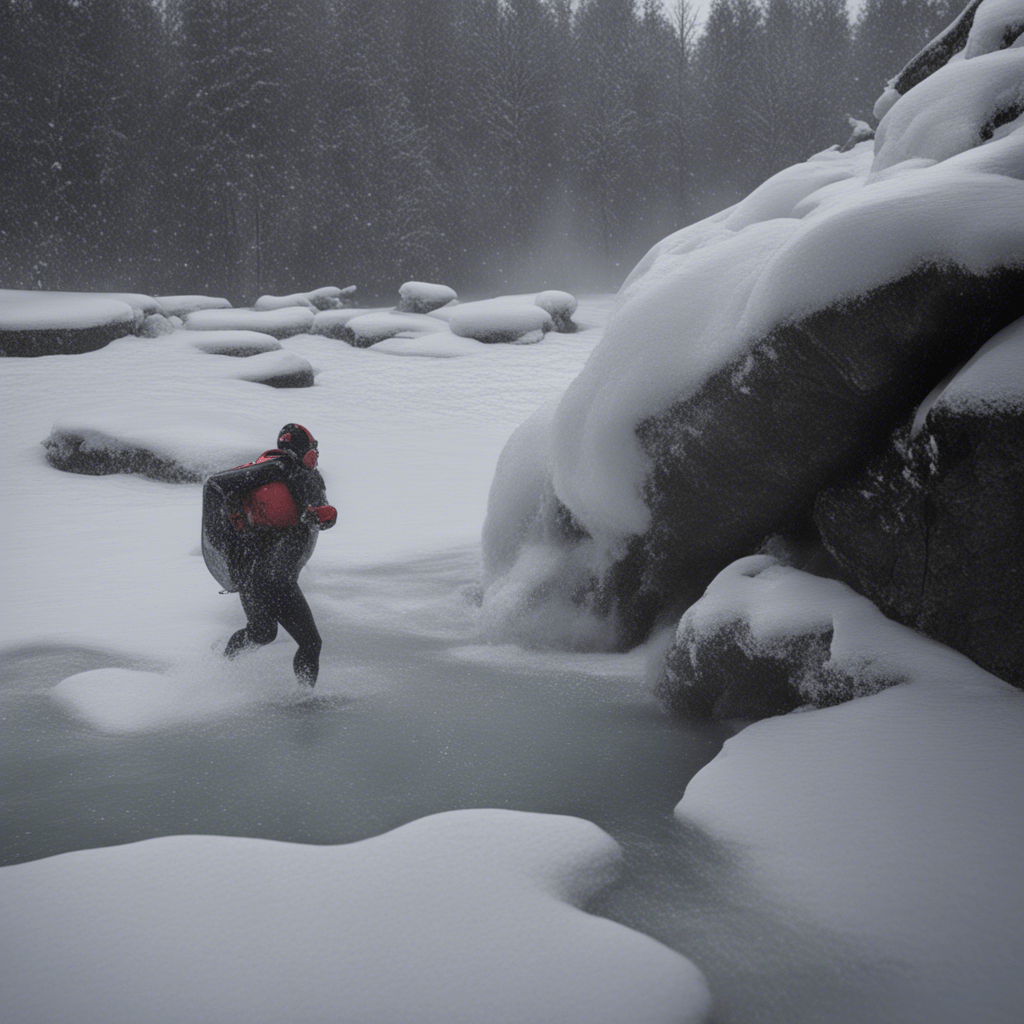
Are Ice Baths a Miracle Weight Loss Solution?
While cold exposure might help stimulate metabolism through the activation of brown fat (6), they are not a miracle weight loss solution. Weight loss is a complex process, and the ‘calories in, calories out’ equation holds. So, while ice baths could potentially contribute to calorie burning, they are unlikely to cause significant weight loss without accompanying dietary changes and physical activity.
When it comes to sustainable weight loss, the old-school advice reigns: have a balanced diet combined with regular exercise. Ice baths may serve as an additional tool in your arsenal, providing benefits ranging from pain management to workout recovery, but should not replace healthy life habits.
Are Ice Baths Safe?
While ice baths can offer numerous benefits, it’s essential to know about the potential negative side effects. Those are:
- Low body temperature (hypothermia) – make sure you don’t sit in an ice bath for more than 10 to 15 minutes, as this can cause you to develop a dangerously low body temperature or even organ and nerve failure.
- Ice burns and rashes – itchy rashes can develop when the skin touches something extremely cold. Similar to skin burns, ice burns can be painful and uncomfortable. In some cases, they can cause swelling of the surrounding tissue.
- Heart issues – narrowing of the blood vessels that happens upon plunging into icy water can cause irregular heartbeats. Your heart can be under even more stress if you already suffer from increased blood pressure or any heart disease.
- Raynaud’s syndrome – develops when the cold narrows the blood vessels so much that they cannot return to their normal width. The lack of blood usually develops in fingertips or toes and turns them very pale or blue.
Understanding how to safely use ice baths goes a long way toward ensuring a good experience. Cold exposure therapy should be a gradual process. If you’re just beginning, start with lukewarm water and progressively decrease the temperature over several weeks.
Be sure to seek out professional medical guidance before adding cold immersion therapy to your weekly routine.
How Can I Incorporate Ice Baths Into My Wellness Routine?
If you decide ice baths are for you, it’s wise to integrate them as a component of a comprehensive wellness routine. Consider:
- the time of day,
- length of your session,
- how you want to warm up afterward.
The primary benefits of ice bath therapy are:
- enhancing recovery,
- potentially increasing tolerated exercise volume,
- minimizing muscle soreness.
Who knows, you might find the potential weight loss because of the cold-induced calorie burning an added bonus.

Conclusion
So, are ice baths for weight loss fact or fiction? The answer, as often is the case with most health-related questions, is not black and white.
There’s scientific support confirming that cold exposure activates brown fat. This can catalyze burning calories and might lead to a small amount of weight loss. There’s also some evidence, although mostly anecdotal, suggesting that cold exposure could suppress appetite. Considering these aspects, there is some truth in the claim that ice baths can contribute to weight loss.
However, labeling ice baths as a magic bullet for weight loss is wrong. Cold exposure alone, without a balanced diet and regular physical exercise, is unlikely to have a major effect on weight.
Given the potential short-term risks and long-term benefits, anyone considering ice baths should consult with a healthcare professional. After all, being healthy means making well-informed and researched choices.
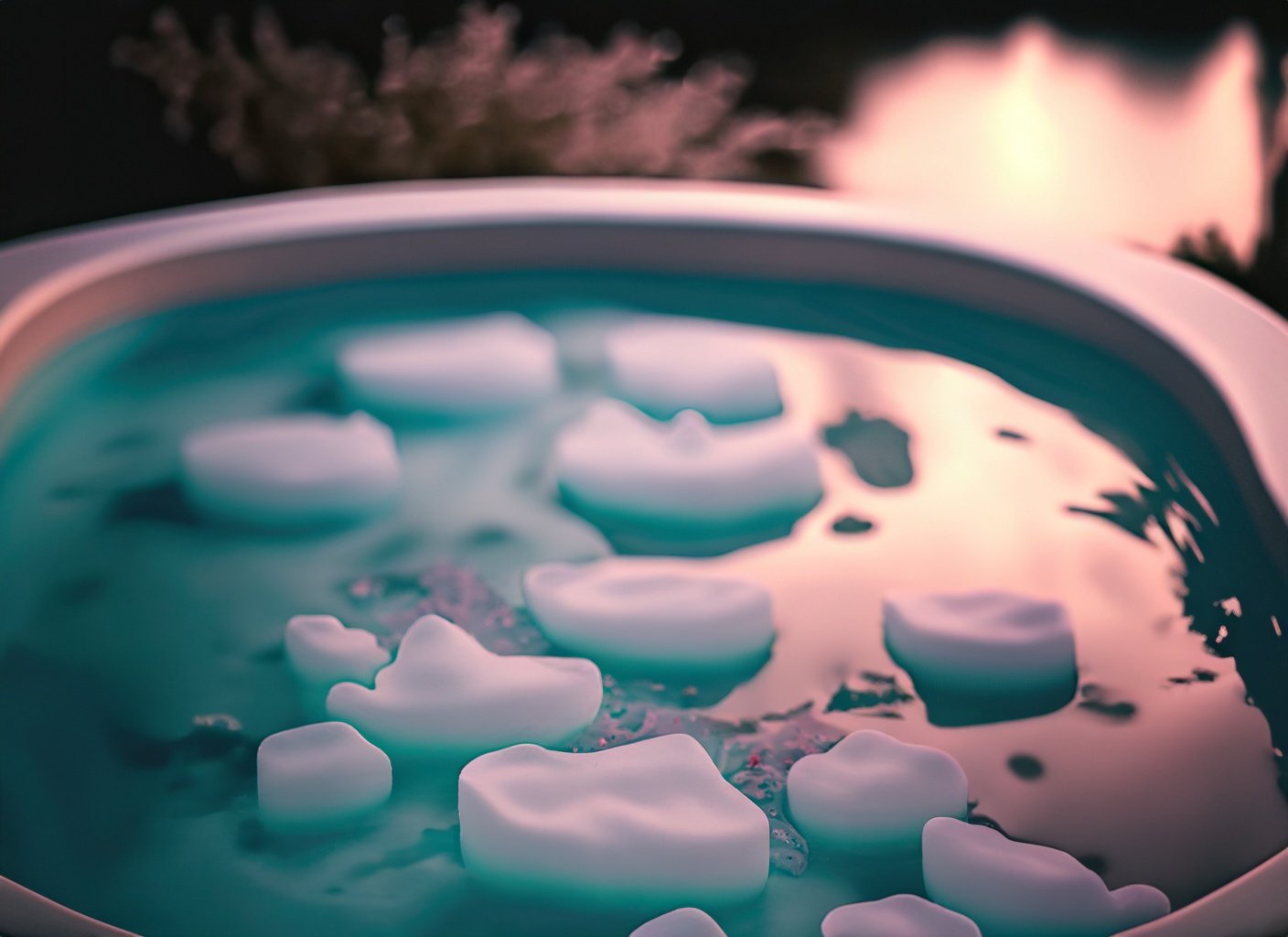
Literature sources
- Janský L, Pospísilová D, Honzová S, Ulicný B, Srámek P, Zeman V, Kamínková J. Immune system of cold-exposed and cold-adapted humans. Eur J Appl Physiol Occup Physiol. 1996;72(5-6):445-50. doi: 10.1007/BF00242274.
- Yankouskaya A, Williamson R, Stacey C, Totman JJ, Massey H. Short-Term Head-Out Whole-Body Cold-Water Immersion Facilitates Positive Effect and Increases Interaction between Large-Scale Brain Networks. Biology (Basel). 2023 Jan 29;12(2):211. doi: 10.3390/biology12020211.
- Chauvineau M, Pasquier F, Guyot V, Aloulou A, Nedelec M. Effect of the Depth of Cold Water Immersion on Sleep Architecture and Recovery Among Well-Trained Male Endurance Runners. Front Sports Act Living. 2021 Mar 31;3:659990. doi: 10.3389/fspor.2021.659990.
- Wang Y, Li S, Zhang Y, Chen Y, Yan F, Han L, Ma Y. Heat and cold therapy reduce pain in patients with delayed onset muscle soreness: A systematic review and meta-analysis of 32 randomized controlled trials. Phys Ther Sport. 2021 Mar;48:177-187. doi: 10.1016/j.ptsp.2021.01.004.
- Symonds ME, Aldiss P, Pope M, Budge H. Recent advances in our understanding of brown and beige adipose tissue: the good fat that keeps you healthy. F1000Res. 2018 Jul 24;7:F1000 Faculty Rev-1129. doi: 10.12688/f1000research.14585.1.
- Huo C, Song Z, Yin J, Zhu Y, Miao X, Qian H, Wang J, Ye L, Zhou L. Effect of Acute Cold Exposure on Energy Metabolism and Activity of Brown Adipose Tissue in Humans: A Systematic Review and Meta-Analysis. Front Physiol. 2022 Jun 28;13:917084. doi: 10.3389/fphys.2022.917084.

